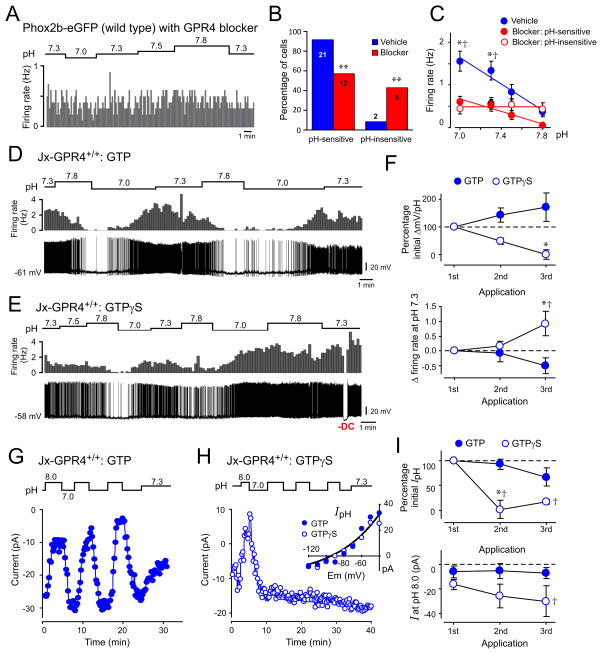Figure 3. GPR4 and G protein activation contribute to effects of pH on firing and background K+ currents in RTN neurons from wild-type mice.
(A) Firing activity in a wild-type RTN neuron incubated with GPR4 antagonist (Dalton M46, 20 μM); the cell was insensitive to changes in bath pH.
(B) The percentage of pH-sensitive and pH-insensitive wild-type RTN neurons was significantly different after treatment with the GPR4 blocker (**, P<0.0001 by χ2; n provided for each group).
(C) Averaged firing rate at different bath pH from vehicle-treated RTN neurons (n=21) or GPR4 blocker-treated cells that were identified as pH-sensitive (n=12) or pH-insensitive (n=9). *, P<0.05 for vehicle vs blocker:pH-sensitive; and †, P<0.05 for vehicle vs blocker:pH-insensitive, by 2-way RM-ANOVA with Dunnett’s test.
(D, E) Effects of repeated changes in bath pH on firing rate (upper) and membrane potential (lower) recorded from wild-type RTN neurons in the whole cell current clamp configuration with pipettes containing either GTP (D) or GTP-γ-S (E).
(F) Upper: Membrane hyperpolarization (% initial) during multiple bouts of bath alkalization in RTN neurons recorded with GTP and GTP-γ-S. Lower: Change in baseline firing (at pH 7.3) following repeated bath alkalization in RTN neurons recorded with GTP and GTP-γ-S. (2-way RM-ANOVA; *, P<0.05 for GTP vs. GTP-γ-S by Bonferroni test; and †, P<0.05 vs. 1st application by Dunnett’s test; n=8 & 4).
(G, H) Effects of repeated changes of bath pH on holding current in wild-type RTN neurons during whole cell voltage clamp recording with pipettes that contained GTP (G) or GTP-γ-S (H). Inset shows the pH-sensitive I-V obtained during the first sojourn from pH 8 to pH 7 for both cells, overlaid with a fit using the GHK equation.
(I) Normalized pH-sensitive current (pH 8 minus pH 7 at −60 mV, upper) and holding current at pH 8 (lower) during repeated bouts of bath acidification and alkalization. (2-way RM-ANOVA; *, P<0.05 for GTP vs. GTP-γ-S by Bonferroni test; and †, P<0.05 vs. 1st application by Dunnett’s test; n=7 & 3).

